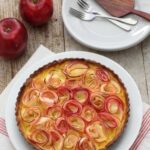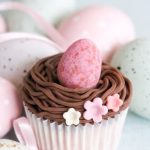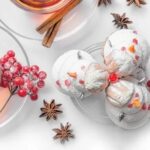Decorating a cake is like putting the finishing touch on a masterpiece. And when it comes to cake decoration, icing is the ultimate tool that can truly elevate the look and taste of any cake.
From creating smooth and flawless surfaces to adding intricate designs and textures, the right icing can transform a simple cake into a work of art. In this article, we will explore the importance of icing for cake decoration, discussing its impact on both aesthetics and flavor.
When it comes to cake decoration, icing plays a crucial role in bringing your creative vision to life. Not only does it provide a beautiful canvas for your artistic designs, but it also enhances the overall taste experience. The choice of icing can make or break your creation, as it adds moisture and sweetness while balancing out the flavors of the cake itself.
Different types of icing offer unique characteristics that suit various decorating styles and tastes. Fondant provides versatility with its ability to be molded into elaborate shapes and deliver a smooth finish. Buttercream offers a creamy and fluffy texture that is perfect for piped designs and borders. Ganache showcases elegance with its rich and glossy appearance, while royal icing provides firmness for decorative details.
In the following sections of this article, we will delve deeper into the different types of icings available for cake decoration, discuss how to choose the right icing for each occasion, provide tips and techniques for achieving a perfect finish, explore DIY icing decorations, troubleshoot common issues, discover advanced techniques, and showcase top trends and innovations in icing. So let’s dive in and uncover all the secrets behind creating stunning cakes with the magic touch of icing.
Different Types of Icing for Cake Decoration
When it comes to cake decoration, choosing the right type of icing is essential in achieving the desired aesthetic and taste. There are several different types of icing that can be used, each offering its own unique characteristics and benefits. By understanding the various options available, decorators can select the perfect icing to bring their cake designs to life.
One popular choice for cake decoration is fondant icing. Fondant offers a smooth and versatile finish, making it ideal for creating intricate designs and shapes. It can be rolled out and draped over cakes, providing a seamless canvas for decorations. Fondant also allows for vibrant colors and precise detailing, making it a favorite among professional decorators.
Another beloved option is buttercream icing. Known for its creamy texture and fluffy consistency, buttercream adds rich flavor to cakes while also providing a soft and inviting appearance. Buttercream can be easily piped onto cakes to create decorative borders or patterns, making it a popular choice for both simple and elaborate designs.
For those looking for a more decadent finish, ganache icing is an excellent choice. Made from chocolate and cream, ganache offers a luxurious glossy appearance that adds elegance to any cake design. It can be poured over cakes as a glaze or whipped into a frosting-like consistency for easy spreading.
Lastly, royal icing is often used when intricate detailing or firm structures are required in cake decoration. Royal icing hardens when set, allowing decorators to create delicate lacework, 3D figures, or even assemble multi-tiered cakes with stability. It is also commonly used for piping intricate borders or writing messages on cakes.
By exploring these different types of icing options, decorators can choose the perfect one that aligns with their creative vision while considering practicality factors such as flavor profiles, ease of use, and desired finish. Each type has its own unique characteristics that contribute to the overall success of the cake design.
In the next section, we will discuss how to choose the right icing for different occasions, ensuring that your cake is not only visually appealing but also delights the tastebuds of those who enjoy it.
Choosing the Right Icing for the Occasion
When it comes to cake decoration, choosing the right icing is essential in creating a stunning and visually appealing masterpiece. The type of icing used not only plays a crucial role in achieving the desired aesthetic but also enhances the flavor profile of the cake. There are several factors to consider when selecting icing for different occasions.
One important consideration when choosing icing is the theme and purpose of the cake. For example, if you are decorating a birthday cake for a child, bright colors and fun designs may be more suitable. On the other hand, a formal occasion like a wedding or anniversary may call for elegant and intricate decorations. Fondant icing is an excellent choice for these types of events as it allows for versatility and can be molded into various shapes and designs.
Another factor to take into account is matching icing flavors with the cake’s flavor profile. While some cakes pair well with rich and creamy buttercream icing, others may benefit from the smoothness of ganache or royal icing. For instance, a chocolate cake may be enhanced by pairing it with a decadent chocolate ganache, while a light sponge cake could be complemented perfectly by a tangy lemon-flavored buttercream.
It’s also important to balance the desired aesthetic with the practicality of the chosen icing. Some icings require special techniques or tools to achieve specific designs, while others can easily be piped or spread onto cakes. Considering your skill level and time constraints will help determine which type of icing is most suitable for your occasion.
| Consideration | Importance |
|---|---|
| Theme and Purpose of Cake | High |
| Icing Flavor Pairing | Medium |
| Aesthetic vs. Practicality | Medium |
Tips and Techniques for Achieving a Perfect Icing Finish
Achieving a perfect icing finish is essential to creating a visually appealing and professional-looking cake. With the right tips and techniques, you can ensure that your cake’s icing is smooth, flawless, and expertly finished. Here are some key pointers to help you achieve a perfect icing finish:
- Properly prep the cake: Before applying the icing, it’s crucial to prepare the cake properly. Start by leveling the top of the cake if necessary to create an even surface. Then, brush away any loose crumbs with a pastry brush or clean cloth. Finally, apply a thin layer of frosting called a crumb coat to seal in any loose crumbs and provide an even base for your final layer of icing.
- Smooth surfaces: To achieve that sought-after polished look, it’s important to have smooth surfaces on your cake. Use an offset spatula or bench scraper to spread the icing evenly across the cake, starting from the top and working your way down the sides. Applying gentle pressure while smoothing out the icing can help create an even layer.
- Piping techniques for decorative detailing: Once you have achieved a smooth finish with your base layer of icing, you can use different piping techniques to add decorative detailing onto your cake. From intricate designs and patterns to borders and lettering, piping allows you to personalize your cake and take its appearance to the next level.
To get started with piping, fill a piping bag fitted with a desired tip (such as round or star) with the icing of your choice. Firmly hold the bag at its twisted end and apply consistent pressure while guiding it across the surface of the cake. Practice various techniques like rosettes, shells, or dots on parchment paper before attempting them on the actual cake.
By following these tips and techniques for achieving a perfect icing finish, you will be able to elevate your cake decoration skills and produce stunning results every time. Remember that practice makes perfect, so don’t be afraid to experiment and have fun with different icing styles and designs.
DIY Icing Decorations
Adding personalized touches to cakes with DIY icing decorations can elevate the overall design and create a special touch. With the right techniques and tools, home bakers can create elegant patterns, edible flowers, figurines, and elaborate piped designs that will impress any guest. Whether it’s for a birthday, wedding, or any other special occasion, DIY icing decorations allow for unique and customized cake designs.
Creating elegant patterns and designs using royal icing
Royal icing is a popular choice for creating intricate patterns and designs on cakes. It has a smooth texture that allows for precise piping and detailing. By using different piping tips and techniques, such as flooding or stringwork, home bakers can achieve beautiful lace-like patterns, delicate borders, or even personalized messages on their cakes. Royal icing also dries hard, making it perfect for creating three-dimensional elements like flowers or delicate figurines that can be affixed to the cake.
Mastering the art of creating edible flowers and figurines with fondant
Fondant is another versatile icing option for creating personalized touches on cakes. It is pliable and can be rolled out to cover an entire cake smoothly or used to shape various decorations like flowers or figurines. Fondant allows for endless creativity as it can be tinted with food coloring and manipulated into various shapes. From lifelike roses to cute animal characters, fondant decorations add a touch of whimsy and elegance to any cake.
Utilizing buttercream icing for elaborate piped designs and borders
Buttercream icing is not only delicious but also great for adding decorative touches to cakes. Its creamy consistency makes it ideal for piping intricate designs such as rosettes, shells, or basketweave patterns onto the surface of a cake. Buttercream can also be used to create borders around the edges of the cake or between tiers. With practice and the right piping tips, home bakers can achieve professional-looking decorations that are sure to impress.
By incorporating DIY icing decorations into their cake designs, home bakers can add a personalized touch that reflects their creativity and style. Whether it’s through elegant patterns created with royal icing, lifelike figurines crafted from fondant, or intricate piped designs using buttercream, these personalized touches enhance the aesthetic appeal of any cake. With a bit of practice and experimentation, home bakers can create truly stunning and unique cakes that will be the center of attention at any gathering.
Troubleshooting Common Icing Issues
When it comes to cake decoration, icing plays a vital role in achieving a flawless and professional finish. However, even the most skilled bakers can encounter common issues with their icing. By addressing these problems head-on, you can maintain a polished appearance for your cakes. Here are some troubleshooting tips for fixing common icing issues:
- Air Bubbles: One of the most frustrating problems when working with icing is the formation of air bubbles on the cake’s surface. To prevent this issue, make sure to properly smooth out the icing using a spatula or smoothing tool. If air bubbles still appear, gently tap the cake on a hard surface to release trapped air.
- Cracked Icing: Cracking can happen when the top layer of icing dries and separates from the cake underneath. The main causes of cracked icing are applying too thick of a layer or spreading it over an uneven surface. To avoid cracking, apply thin layers of icing and ensure that your cake is level before decorating.
- Melting Icing: High temperatures or humidity can cause your icing to melt or sag before it sets, resulting in a messy appearance. To avoid this issue, keep your workspace cool and dry while working with buttercream or other soft icings. If your cake starts to warm up and the icing begins to melt, place it in the refrigerator briefly to firm up.
No matter how experienced you are in cake decoration, troubleshooting common icing issues is part of the process. By following these tips and techniques, you can overcome challenges and achieve a professional-looking finish for your cakes.
Troubleshooting Tips at a Glance
- Smooth out air bubbles by tapping or smoothing
- Prevent cracking by applying thin layers and leveling your cake
- Avoid melting icing by keeping your workspace cool and dry
Advanced Techniques for Icing Cake Decoration
When it comes to cake decoration, there are always new techniques and trends emerging to push the boundaries of creativity. Advanced icing techniques allow bakers and decorators to elevate their cake designs and create truly unique and eye-catching creations. In this section, we will explore some of these advanced techniques and discuss how they can be used to achieve stunning results.
One popular advanced technique is the ombré effect. This technique involves blending multiple shades of a single color or transitioning from one color to another in a smooth gradient. The result is a visually striking and elegant design that adds depth and dimension to the cake. Achieving the ombré effect can be done using buttercream icing by varying the amount of food coloring added to each layer of icing or using an airbrush for a more seamless transition.
Marbling is another advanced technique that can create a mesmerizing effect on cakes. This technique involves swirling different colors together, creating a marble-like pattern. Marbling can be achieved with fondant or royal icing by mixing different shades of icing together in a swirling motion before applying it onto the cake. The result is a beautiful and unique design that adds sophistication to any cake.
Incorporating different textures, colors, and finishes is also an advanced technique that can take cake decoration to the next level. For example, adding edible glitter or luster dust can give a cake a glamorous touch, while using textured stencils or embossing mats can create intricate patterns on fondant-covered cakes. By combining various elements such as different piping techniques, edible paints, and even edible prints, decorators can create visually stunning cakes that are truly one-of-a-kind.
| Advanced Techniques for Icing Cake Decoration |
|---|
| – Ombré effect: Blending multiple shades of a single color or transitioning from one color to another in a smooth gradient |
| – Marbling: Swirling different colors together to create a mesmerizing marble-like pattern |
| – Incorporating different textures, colors, and finishes to elevate cake designs and create unique effects |
Top Trends and Innovations in Icing for Cake Decoration
With the ever-evolving world of cake decoration, there are always new trends and innovations emerging in the realm of icing. This section will showcase some of the top trends and innovations in icing for cake decoration, providing readers with inspiration and ideas for creating unique and stunning designs.
Painted Icing Effects
One of the most popular trends in icing for cake decoration is the use of painted effects. This involves using edible paints or food coloring to create intricate designs and patterns on cakes. From watercolor-like washes to detailed hand-painted images, this trend allows decorators to add a personalized touch to their creations. Using different brushes, sponges, or even airbrushing techniques, bakers can achieve stunning results with painted icing.
Geometric Patterns
Geometric patterns have gained significant popularity in recent years as a trend in cake decoration. Icing techniques such as stenciling or piping are utilized to create clean lines, shapes, and patterns on cakes. From simple triangles and squares to intricate hexagons or chevron designs, geometric patterns offer a modern and visually appealing aesthetic. This trend is often combined with bold color choices or metallic finishes to further enhance the overall design.
Textured Icing Finishes
Texture can play a significant role in elevating the overall design of a cake. One trending innovation in icing for cake decoration is the use of textured finishes such as ruffles, pleats, or brush strokes. These finishes add depth and visual interest to cakes, creating a unique experience both visually and texturally. Techniques like using pleating tools, textured mats, or specialized painting techniques allow decorators to experiment with various textures and create one-of-a-kind designs.
Interactive Designs
Innovation in icing has not just focused on aesthetics but also on interactive elements that engage the senses. Edible elements such as popping candy, edible glitter, or flavored gel-filled pipings are being used to create interactive experiences for cake consumers. These unique innovations allow decorators to surprise and delight their customers by delivering both visually stunning and flavor-packed creations.
Sustainable Decorations
As the world becomes more environmentally conscious, cake decorators have started opting for sustainable icing decorations. This includes using natural food colorings derived from fruits and vegetables, biodegradable sprinkles, and even edible flowers sourced locally. By embracing sustainability in cake decoration, decorators not only contribute to the well-being of the environment but also offer unique and ethically conscious designs to their customers.
From painted icing effects to sustainable decorations, these top trends and innovations in icing for cake decoration are revolutionizing the way we approach designing cakes. By staying abreast of these trends and experimenting with different techniques, decorators can create show-stopping designs that will truly impress their clients. The world of icing is full of possibilities, encouraging decorators to explore new ideas and push the boundaries of their creativity.
Conclusion
In conclusion, icing is an essential element when it comes to cake decoration. It not only contributes to the overall look of a cake but also plays a significant role in enhancing its taste. Throughout this article, we have explored the different types of icing available, such as fondant, buttercream, ganache, and royal icing, each with its unique qualities and uses.
When choosing the right icing for a cake, it is important to consider the occasion and theme of the cake. The flavor profile should also be taken into account to ensure a harmonious pairing between the icing and the cake itself. Striking a balance between desired aesthetics and practicality is crucial in achieving the perfect finish.
To achieve a flawless icing finish, proper prepping of the cake is necessary. Smooth surfaces can be achieved through various techniques, while piping can be used for intricate detailing. Additionally, DIY icing decorations offer an opportunity to add personalized touches to cakes, whether it’s creating elegant patterns with royal icing or crafting edible flowers and figurines with fondant.
It is important to address common issues that may arise during the icing process, such as air bubbles or melting icing. Troubleshooting tips can help maintain a professional-looking finish. For those seeking advanced techniques in cake decoration, exploring ombré effects or incorporating different textures can elevate designs to new heights.
Lastly, it is essential to stay up-to-date with top trends and innovations in icing techniques and designs. This allows decorators to constantly push their creative boundaries and experiment with new possibilities. Whether you are a professional baker or an aspiring home decorator, let your creativity shine through your icing creations and enjoy the fun and rewarding experience of decorating cakes.
Frequently Asked Questions
What kind of icing do you use for cake decorating?
The kind of icing commonly used for cake decorating is buttercream icing. Buttercream is a versatile icing that can be easily piped, smoothed, and shaped to create different designs and textures on cakes. It has a creamy and slightly sweet taste, which complements the flavors of most cakes.
Buttercream can also be colored with food coloring to create vibrant and decorative finishes on cakes. It is made by creaming together butter, powdered sugar, and flavorings such as vanilla extract.
What is the best icing for lettering cakes?
When it comes to lettering cakes, the best icing to use is royal icing. Royal icing is a smooth and hard-drying icing that sets firm, making it ideal for creating precise letters and intricate designs on cakes. Its firm consistency allows for greater control when piping letters onto the cake surface.
Royal icing is made from powdered sugar, egg whites or meringue powder, and water or lemon juice. After applying royal icing lettering to a cake, it dries into a matte finish that adds an elegant touch.
Is frosting or buttercream better for cake decorating?
Whether frosting or buttercream is better for cake decorating depends on personal preference and the desired result. Buttercream is more commonly used in cake decorating due to its versatility and ease of use.
It can be smoothed out for a flawless finish or piped into intricate designs using various piping tips. With its creamy texture, buttercream creates a softer appearance on cakes compared to frosting.

Welcome to my blog about home and family. This blog is a place where I will share my thoughts, ideas, and experiences related to these important topics. I am a stay-at-home mom with two young children. I hope you enjoy reading it! and may find some helpful tips and ideas that will make your home and family life even better!





